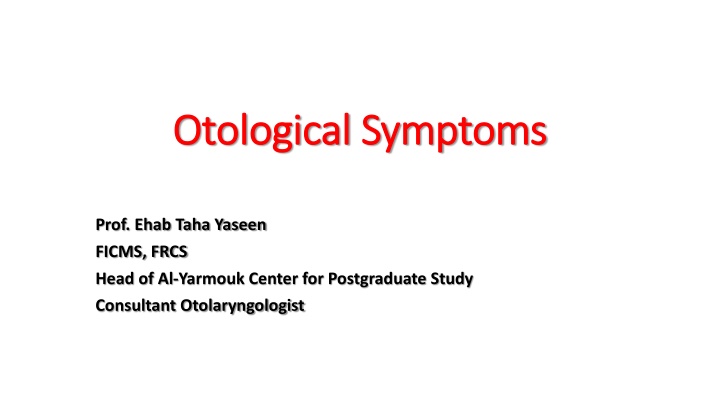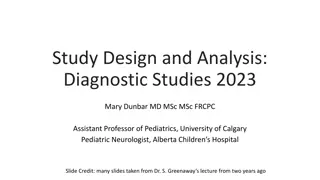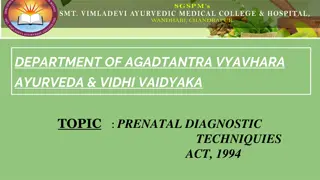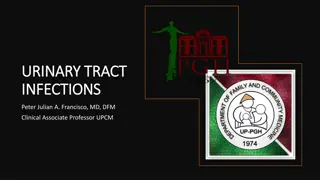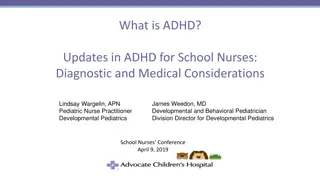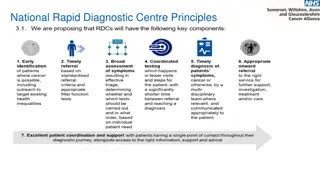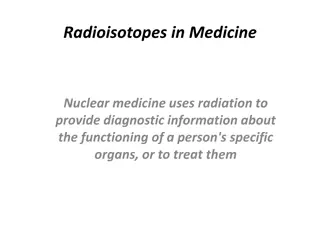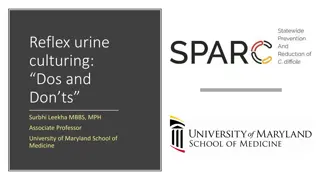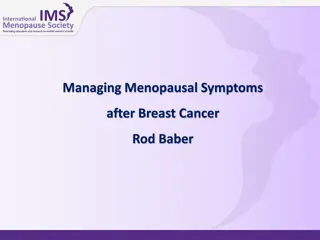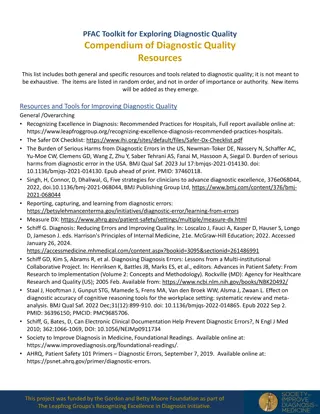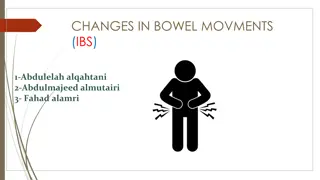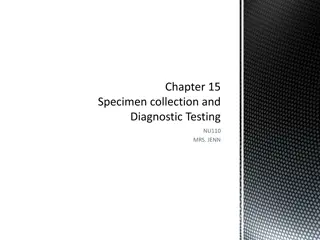Otological Symptoms and Diagnostic Considerations
Various otological symptoms and their significance in evaluating ear diseases, focusing on hearing loss, otorrhea, and associated factors like time course, age, and symptoms. Diagnostic considerations for hearing loss in different patient populations.
Download Presentation

Please find below an Image/Link to download the presentation.
The content on the website is provided AS IS for your information and personal use only. It may not be sold, licensed, or shared on other websites without obtaining consent from the author.If you encounter any issues during the download, it is possible that the publisher has removed the file from their server.
You are allowed to download the files provided on this website for personal or commercial use, subject to the condition that they are used lawfully. All files are the property of their respective owners.
The content on the website is provided AS IS for your information and personal use only. It may not be sold, licensed, or shared on other websites without obtaining consent from the author.
E N D
Presentation Transcript
Otological Symptoms Otological Symptoms Prof. Ehab Taha Yaseen FICMS, FRCS Head of Al-Yarmouk Center for Postgraduate Study Consultant Otolaryngologist
Why this lecture Why this lecture Fact The most informative features in evaluating hearing loss are the: Time course of the loss. Associated symptoms. Age of the patient
Hence, Hence, This lecture reviews: The common symptoms associated with otologic diseases And The diagnoses to be considered when evaluating these symptoms.
Various symptoms can be either suggestive or diagnostic of ear disease. Accurate clinical assessment is facilitated by understanding the significance of symptom combinations and the relative frequency of specific otologic diseases in different patient populations. Common symptoms that indicate an otologic problem are: otorrhea, otalgia, aural fullness, hearing loss, vertigo, and tinnitus.
Hearing Loss Hearing Loss A complaint of hearing loss can reflect a wide variety of abnormalities. Diagnostic considerations are different in pediatric and adult patients. Evaluation should determine whether the: Loss is unilateral or bilateral or fluctuating. The time course of the hearing loss. Associated symptoms. Past medical history. Past surgical history. (lumber puncture, ear or cardiac surgrey) Drug history. FH of HL, neoplasm, renal diseases. Trauma history, including noise and barotrauma.
The most informative features that facilitate determining the etiology of hearing loss are: The time course of the loss Associated symptoms Age of the patient. Onset: acute vs. gradual Duration and pattern long-standing, fluctuating, rapidly progressive, or of unknown duration. Associated symptoms of aural fullness, pain, otorrhea, vertigo, tinnitus, or cranial neuropathies. Side unilateral or bilateral hearing loss is less revealing in determining the etiology of hearing loss.
Otorrhea Otorrhea Is a drainage from the ear. Arise from numerous sources and causes. Sources: 1) External Ear: otitis externa, dermatitis, neoplasm 2) Tympanic membrane: granular myringitis, Bullous myringitis. 3) Middle ear and mastoid: acute OM. Chronic OM, acute mastoiditis, neoplasm and cholesteatoma. 4) Cerebrospinal Fluid: Temporal bone fracture, Tegmen defect, Cochlea deformity
Related features Odor Color Consistency Purulent: cloudy fluid. It s the most common type of ear drainage and caused by an ear infection. Serous: serum (protein-rich liquid found in the blood). It s most often caused by an ear infection and is thin and watery. Sanguineous: contains blood. This can be drainage from a minor scratch in the ear, a foreign object in the ear or following an injury. Mucoid: This type of otorrhea contains mucus. In most cases, mucoid discharge is caused by blocked Eustachian tubes, resulting in a buildup of mucus in the middle ear. Clear: watery discharge, without any visible coloring, can be caused by skin irritation such as eczema.
Otalgia Otalgia Otalgia most commonly reflects either local pathology or a problem within a contiguous, periauricular structures. The physical examination usually reveals the source of the pain if the pathology is localized. (Primary Otalgia) It is common, however, for a patient to complain of ear pain and have no identifiable pathology within the ear. (secondary or referred otalgia). Evaluation of patients with otalgia is facilitated by a thorough understanding of the innervation of the ear. Appreciation of the anatomy underlying shared neural pathways and the potential causes of referred otalgia arising from a distant site enables a physician to reach a diagnosis.
Innervation: Innervation: 1. The auriculotemporal branch (mandibular division of the 5thnerve) supply the tragus, anterior pinna, anterior lateral surface of the tympanic membrane, and anterosuperior external auditory canal wall. 2. The vagus nerve supply the larynx, hypopharynx, trachea, esophagus, and thyroid gland. The auricular branch of the vagus nerve (Arnold's nerve) supply the concha, infero-posterior EAC, tympanic membrane, and postauricular skin. 3. The glossopharyngeal nerve supply the oropharynx, tonsils, and tongue base. Jacobson's nerve is the tympanic branch of the glossopharyngeal nerve that provides sensation to the medial surface of the TM, mucosa of the middle ear, Eustachian tube, and mastoid air cells.
4. The cervical roots C2 and C3 provide sensation to the postauricular region. 5. The facial nerve innervates the skin of the lateral concha and antihelix, lobule, mastoid, posterior external auditory canal, and posterior portion of the tympanic membrane.
Types of Otalgia Types of Otalgia Primary Otalgia: Arises from local or regional pathology. Sources: acute om, oe, cerumen impaction, inflammation or infection of the auricle, or ear trauma. Regional causes include TMJ dysfunction and periauricular lymphadenopathy from scalp or neck infections. Referred Otalgia: Pain may be referred to the ear from distant sources, such as periodontal or dental disease, parotitis, sinusitis, thyroiditis, tonsillitis, laryngitis, or hiatal hernia with gastroesophageal reflux. In the initial assessment, examination of the ear indicates whether the otalgia is local or regional in origin. If the ear examination is normal, it is helpful to ask the patient to point with one finger to the area of maximal pain.
Aural Fullness Aural Fullness It is subjective symptom. Often described as a stuffy feeling in the ear, ear pressure, or a clogged sensation. If the patient's history reveals associated ear pain, drainage, or hearing loss, the physical examination easily establishes the diagnosis. Causes are variable. Such as: Obstruction of the EAC by cerumen, debris, or a foreign body. Soft tissue mass either in the middle ear or arising from the TM. Part of Meniere s disease. Perilymphatic fistula and Superior canal dehiscence. An abnormally patent or an obstructed Eustachian tube. Such patients complain of autophony and of hearing breath sounds in the ear.
Evidence for an abnormally patent eustachian tube includes 1. A history of weight loss, steroid use, or hormonal therapy. 2. Relief of symptoms: a) When the patient is supine or bending over b) During periods of nasal congestion. c) With sniffing. Evidence for a chronically obstructed eustachian tube orifice includes: 1. The inability to do Valsalva s maneuver 2. Chronic retraction of the tympanic membrane. 3. History of nasal congestion and allergic disorder.
Vertigo Vertigo It may reflect disease within the labyrinth, a retrocochlear abnormality involving either the eighth cranial nerve or more central structures, or the effects of a systemic abnormality. A thorough and well-directed history discriminates otologic from non otologic causes of vertigo in most cases. Identification of associated symptoms, the time course of the vertigo or dysequilibrium, precipitating and alleviating factors, and the general medical history should be assessed in patients with vertigo.
The patient's description of symptoms helps in discriminating between central and peripheral causes of vertigo. A sensation of spinning or motion commonly results from acute vestibular dysfunction, such as viral neuronitis, labyrinthitis, and Meniere's disease. Non vestibular causes of imbalance, such as cardiogenic, metabolic, neurogenic, or psychogenic dysfunction, are often described as a more nonspecific sensation of light-headedness
Tinnitus Tinnitus Is the perception of sound without an external source. Common, affecting 30% of people older than age 55. Annual incidence of 5%. Impairs daily life activity affects 3% to 5% of individuals with tinnitus. It results from auditory deprivation from hearing loss induces central neural changes. Mechanisms involves peripheral triggers and central plasticity. Tinnitus can be classified as objective or subjective.
Hyperacusis & Recruitment Hyperacusis & Recruitment Defined as noise intolerance, annoyance caused by ordinary sounds, and abnormal discomfort for suprathreshold sound. These definitions distinguish hyperacusis, considered by many to be a central phenomenon, from recruitment. Recruitment is the rapid growth of perceived loudness with increasing stimulus level and is observed in association with cochlear hearing loss and outer cell dysfunction. Hyperacusis frequently occurs in association with tinnitus but can be present without tinnitus or any associated hearing loss. Hyperacusis can occur after the loss of the stapedial reflex in association with acute facial paralysis.
